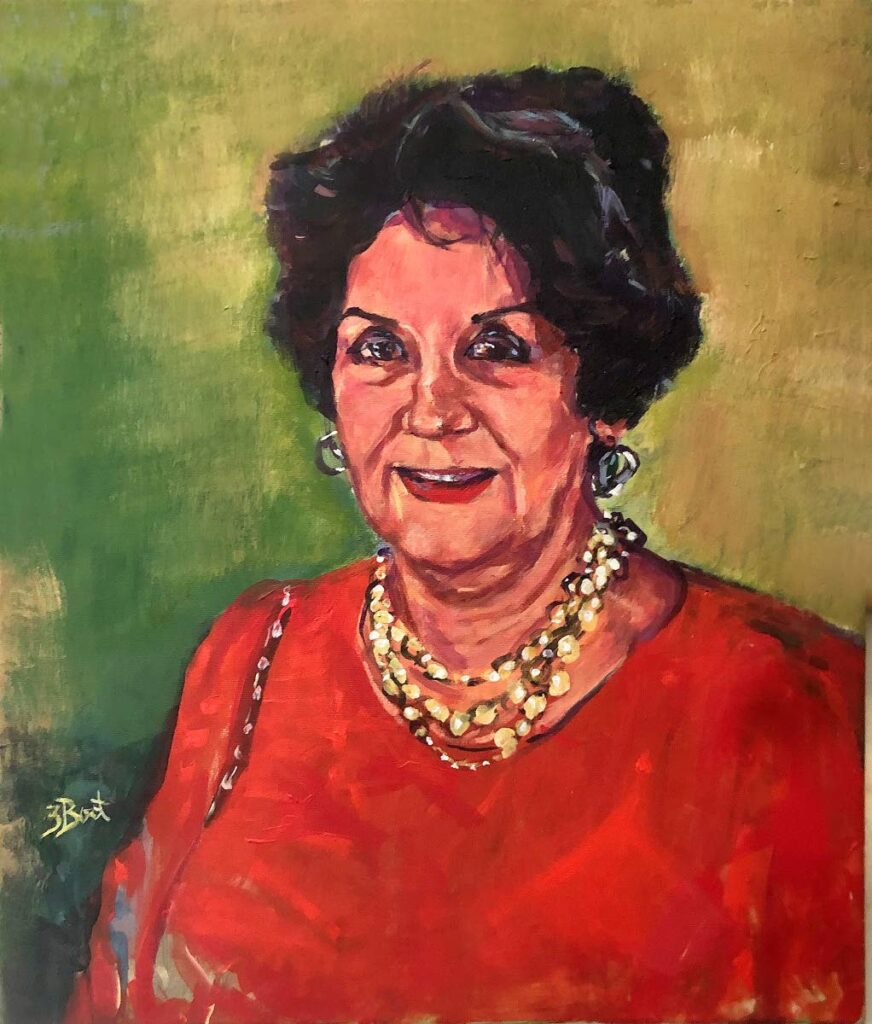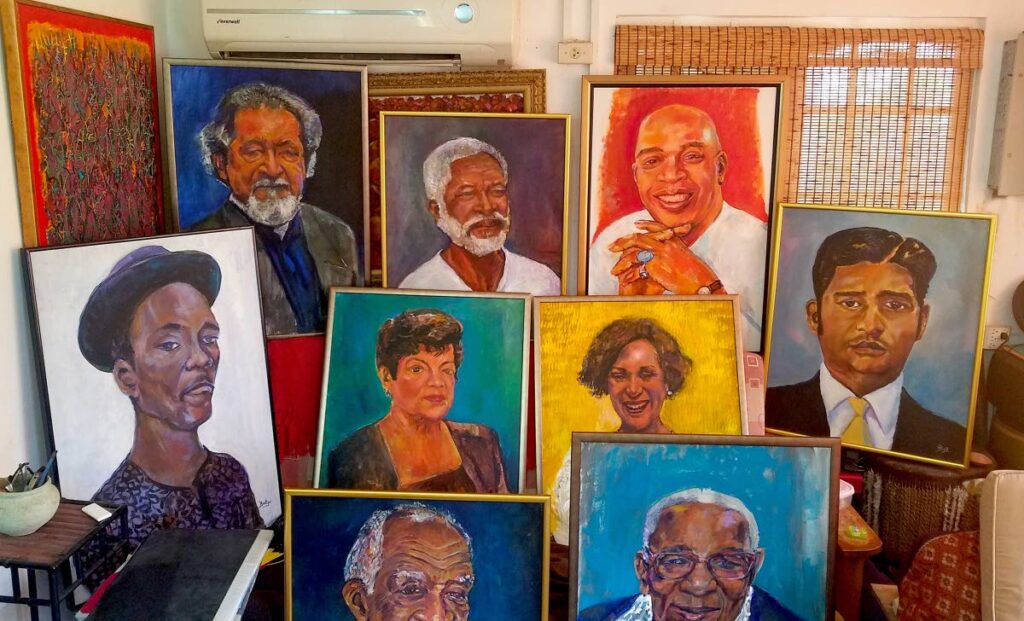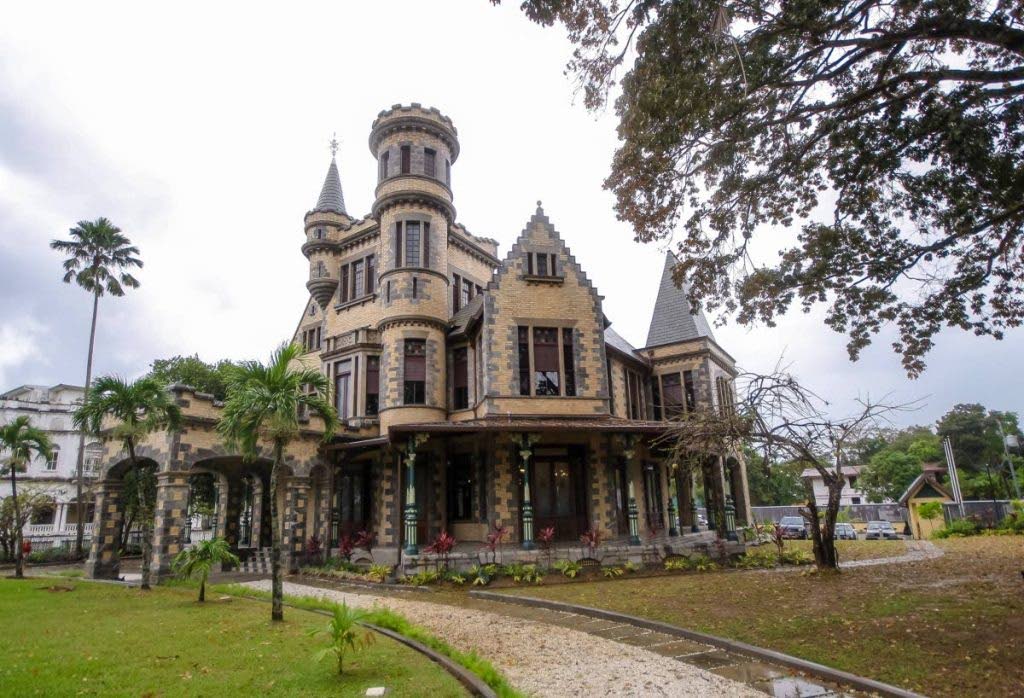Christine Millar, matriarch of the arts

DAVID BOOTHMAN
Christine Millar was TT’s Jaycees Carnival Queen in 1951.
But according to the late Kathryn Stollmeyer Wight, “Christine Millar was so much more than this beautiful face, though, those who knew her still talk about her natural beauty and this was evident all her life too. What valuable contributions she went on to give to our beloved TT. Aunty Christine loved our old buildings and beautiful spaces without reservation.” I concur.
In one of my visits back home from the US, I visited Millar at her art store, Deltex, on Pembroke Street, Port of Spain (back then there were two others – Moart on Henry Street and Beharry’s Art Store, on New Street).
She would always be glad to see me to catch up with my latest work and gossip. Of course, with her signature red wine we would sit for hours in conversation. This was in 1998, when I had told her that we were losing all our artists, thinkers, our "cultural engineers." This was the same year Pat Chu Foon died, so we discussed the idea of pursuing the collection of the cultural icons.
She said "David, you should do it…you are the one to do it, because you can."
Three years later, I installed my Heritage Collection of Cultural Icons at the National Museum in 2001. Within the three years, Scofield Pilgrim, Lord Kitchener, Daisy Voisin and Beryl Mc Burnie had died. They were all included in the collection.
I had created an ongoing Heritage Collection, paying homage to artists and cultural engineers who had died and had contributed immensely to our cultural life in TT and the Caribbean. Their lives and work embody the collective spirit that defines the identity and culture of our people. I dedicated this growing collection to the memory of these artists, who were also my friends and colleagues.
This is not to be confused with living legends – the collection would be passing the baton of legacy to the youth.

The exhibition ran for a month. It was produced by Nalis and the national museum, with the promise to acquire the collection. The curator of the museum at the time was Vel Lewis. Millar knew most of the artists in TT and was very instrumental in arts in education in schools, the Art Society, and arts and environmental programmes all over the country. She is also one of my early art collectors, with an enormous collection of local and regional art.
Her close friend Diana Mahabir-Wyatt said, “Christine was more than a single person. She was a beautiful woman on one level and on another she was a force of nature, a competent business woman, a gracious hostess and a fierce mother, strong, stubborn creative and indomitable.
"Her love of art, of history, of form and structure was never theoretical: it developed into the establishment of supporting organisations such as Citizens for Conservation, developed the Art Society of TT, started a book club and habit-forming discussions on political and social controversies that could cut to the bone. Her generosity to friends and family was legendary, matching the regality reflected in this portrait. A woman of substance.”
There is more to life than the instinct of survival. Our humanity in time has refined this innate instinct through qualities of reflection, scientific methodology, liberal arts and sciences. What stands out at the core is the heritage question and what informs us of – our literacy in understanding that the arts, the artist, the buildings, the architecture and the architects, the music and musicians, the social and the society, are all the essence of our culture – our identity.
Citizens for Conservation was formed in 1979. A group of concerned citizens, including architects, engineers and private citizens, began promoting a greater understanding of TT’s heritage.
In 1986 Millar invited me to join the group. I had just returned from study at Pratt Institute, New York – this was on a government scholarship through the Prime Minister's Best Village organisation. In the Citizens for Conservation group were Martin Farrell, Megan Brown, Reggie Dumas, Rudylynn Roberts, Ken Butcher, Ingrid Simon and other professionals and enthusiasts.
Before, in 1985, following the public outcry over the intended demolition of the George Brown House on the Queen’s Park Savannah in Port of Spain, Citizens for Conservation provided an official voice for the protection of TT’s natural and man-made heritage. Its mission: to sensitise the public to the importance of conservation and preservation.
“Through the efforts of Citizens for Conservation the National Trust Act of TT was drafted and passed by Parliament in 1991 and eventually enacted in 1999. Their present aim is to provide support for the National Trust as well as other interested groups and to lobby as the need arises for the respect, protection and preservation of the many aspects of TT’s heritage,” the website citizensforconservationtt.org said.
When we look at the conservation of most of the Magnificent Seven buildings – Queen’s Royal College, Mille Fleurs, Whitehall, Stollmeyer’s Castle, Archbishop's House and Hayes Court – and of the gingerbread houses of TT, especially in Belmont and Woodbrook, it was Millar who championed this movement for over 45 years.

Back in the day, Citizens members toured cultural sites all over Trinidad, identifying and categorising them, such as churches in Belmont, or Picton Hill.They also campaigned against careless, inappropriate billboards all over Port of Spain and on the highways.
Today Citizens for Conservation is an active organisation with added portfolios of heritage interests and information. History, art and heritage students, scholars and enthusiasts can research, explore and join.
This heritage consciousness and conscientiousness should be encouraged in schools so our youth can understand aesthetic values, culture and anthropology, which would offer an opening to our rich culture necessary for nation-building, as would studying who are the "cultural engineers" like Millar who made it possible.
Millar has since retired into the well-deserved autumn of her life.
Caribbean Renaissance Foundation celebrates the memorable work and dedication of our heritage champion – Christine Millar, "the old Carnival queen," as she fondly called herself.
David Boothman is founder of Caribbean Renaissance Foundation.


Comments
"Christine Millar, matriarch of the arts"